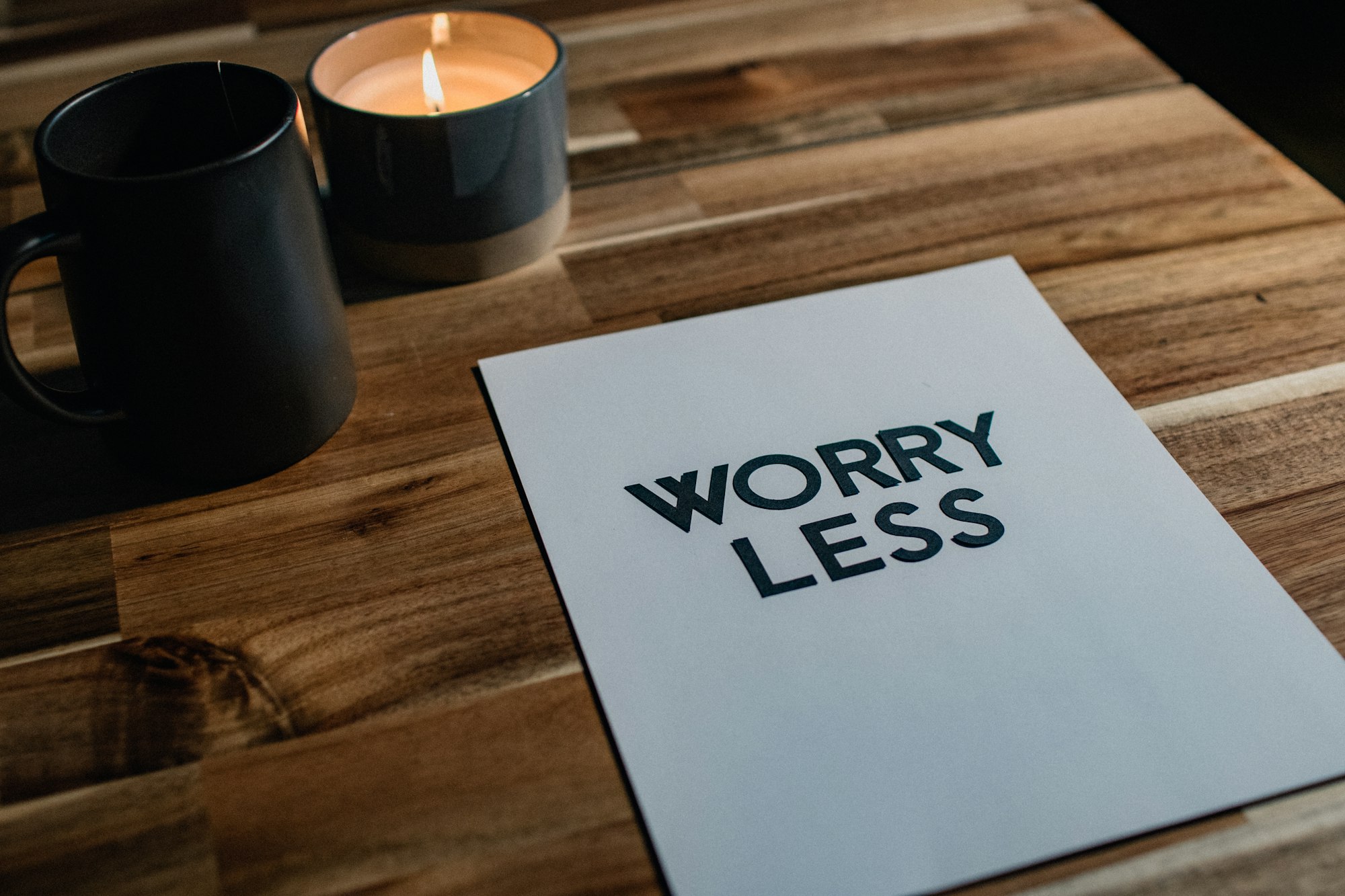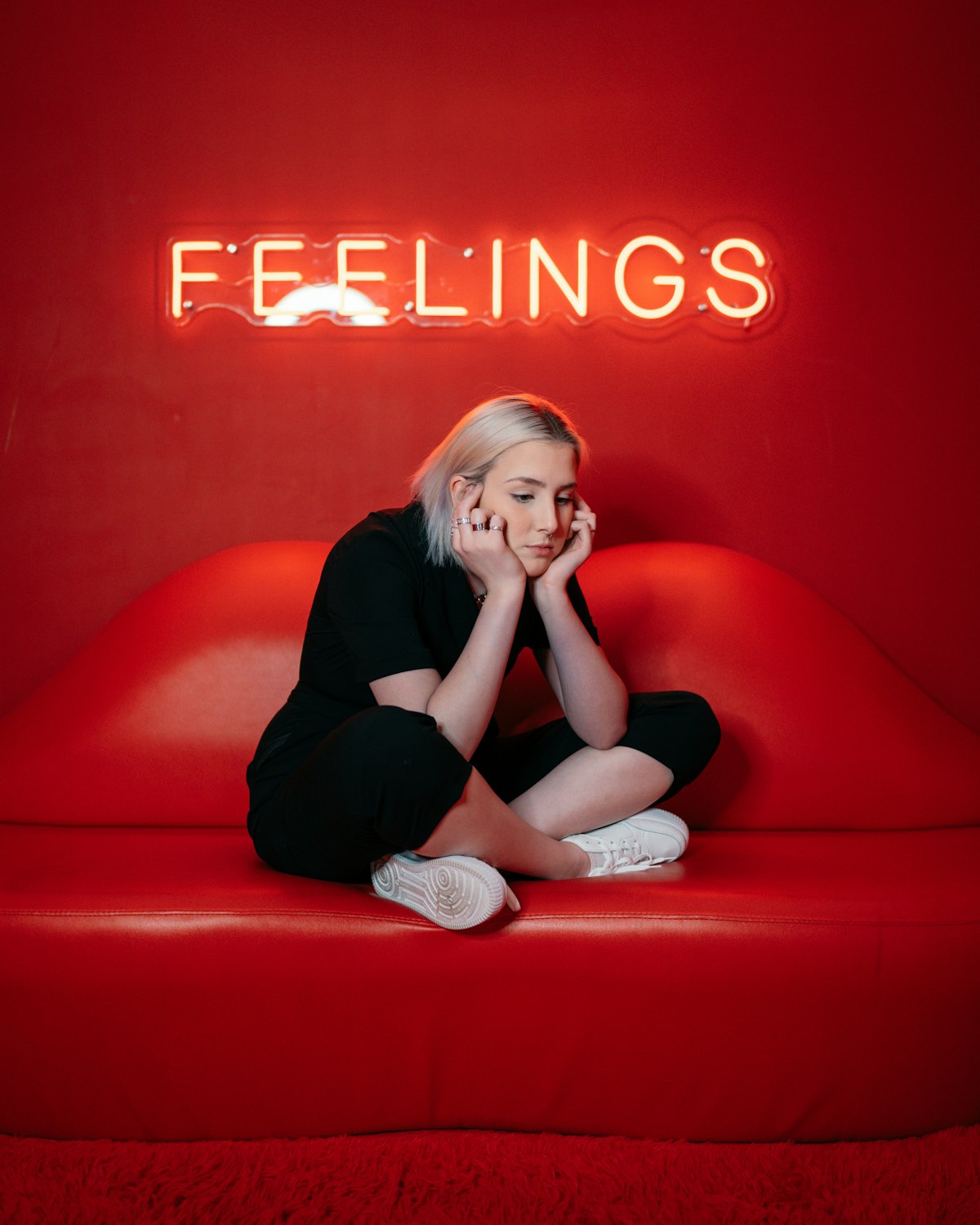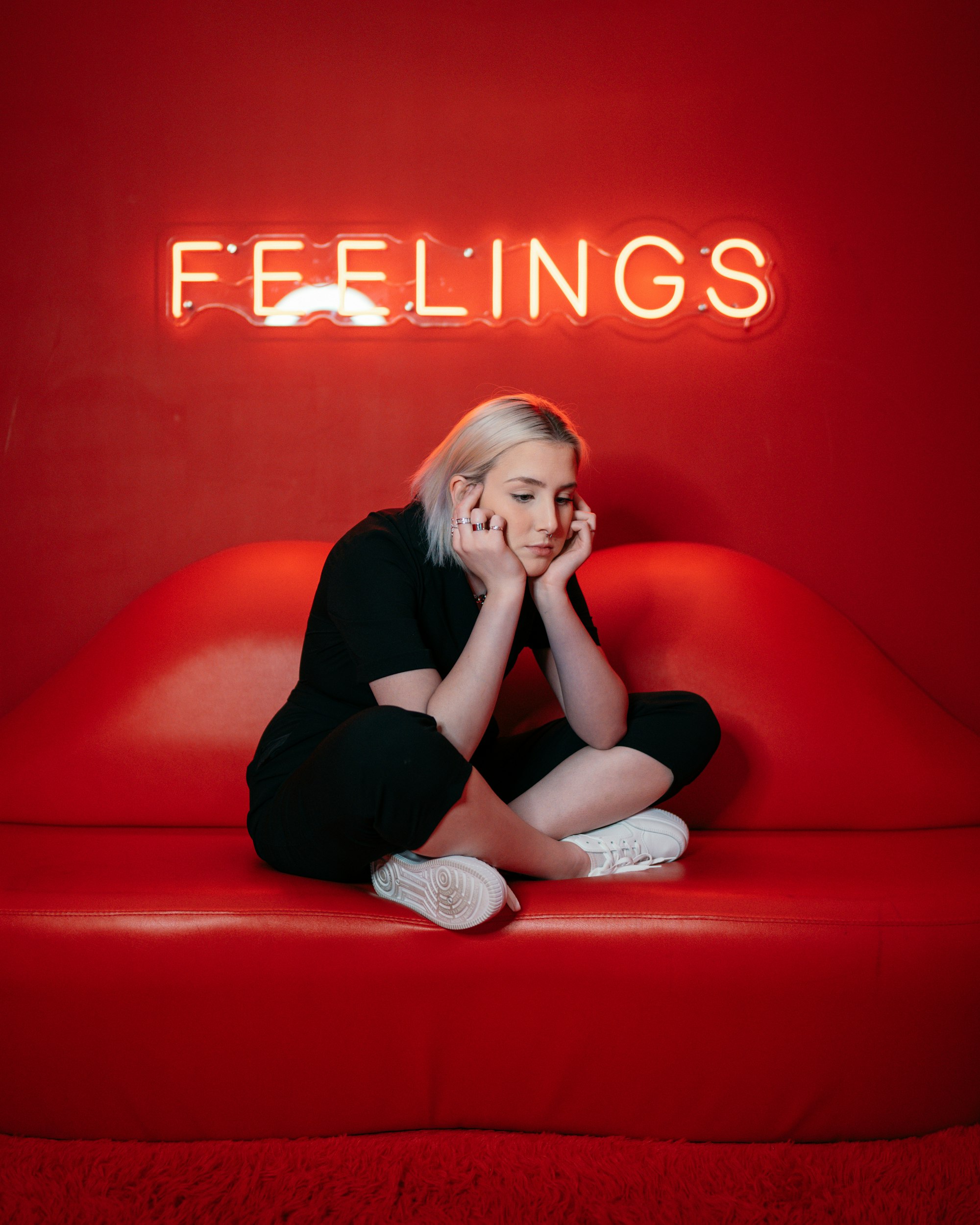Content Summary
Ambivalence, the intricate interplay of conflicting emotions and thoughts, is a phenomenon that has puzzled humanity for ages. It's a psychological state where individuals find themselves torn between contradictory feelings towards a particular situation, decision, or person.
This emotional tug-of-war can manifest in a variety of ways, leading to uncertainty, indecision, and even inner turmoil. But what causes this intricate dance of mixed feelings, and is it related to chemical reactions in the brain or hormonal imbalances?
The Roots of Ambivalence: A Complex Web of Factors
Ambivalence often stems from the complexity of human nature and the myriad of factors that influence our emotions, beliefs, and perspectives. While there might not be a single root cause, several contributing factors can give rise to ambivalent feelings:
Conflicting Values and Beliefs: People are shaped by their upbringing, culture, experiences, and personal beliefs. When faced with a situation that challenges these deeply held values, ambivalence can arise as individuals grapple with aligning their principles with the reality they're confronted with.
Uncertainty and Fear of Consequences: The fear of making the wrong choice or facing undesirable outcomes can lead to ambivalence. The human mind often seeks to avoid negative consequences, which can result in a push-pull dynamic between opposing emotions.
Complexity of Relationships: Ambivalence is particularly common in relationships where individuals have mixed feelings about a person they care about. This can stem from a combination of positive and negative experiences, making it challenging to come to a clear emotional stance.
Emotional Attachment: Emotional attachments can give rise to ambivalence. For instance, a person might feel simultaneously frustrated and caring towards a family member who's struggling with addiction.
Brain Chemistry and Hormonal Influences: Unraveling the Science
While emotions and feelings have physiological underpinnings, ambivalence doesn't have a simple "chemical reaction" explanation. However, neurotransmitters like dopamine, serotonin, and norepinephrine play crucial roles in regulating emotions and mood. Imbalances in these neurotransmitters can influence emotional responses, potentially contributing to ambivalence in certain cases.
Hormonal imbalances, such as those associated with certain mental health conditions like anxiety and depression, can also contribute to mixed feelings. However, ambivalence is more complex than solely being a result of chemical reactions or hormonal shifts. It's often a combination of psychological, cognitive, and emotional factors.
Understanding Ambivalence: Strategies for Clarity
To better understand and navigate ambivalence, individuals can employ various strategies:
Self-Reflection: Engaging in introspection and self-awareness can help individuals identify the underlying causes of their ambivalence. Journaling, therapy, or simply taking time to reflect can provide insights into conflicting emotions.
Gathering Information: Seeking more information about the situation or decision that's causing ambivalence can lead to a clearer perspective. Educating oneself and considering various viewpoints can aid in making an informed choice.
Seeking Support: Discussing one's feelings with friends, family, or a mental health professional can provide valuable insights and emotional support during times of ambivalence.
Mindfulness and Meditation: Practices that promote mindfulness and meditation can help individuals observe their thoughts and emotions without judgment, facilitating a deeper understanding of their inner conflicts.
Gender Hereditary Factors and Ambivalence
Ambivalence is a universal human experience and is not limited to a specific gender. Both men and women can grapple with conflicting emotions due to their unique life experiences, personality traits, and social contexts.
As for hereditary factors, while there's no direct evidence of ambivalence being inherited, certain personality traits and tendencies can have a genetic component. These traits might influence how individuals process and manage their emotions, potentially playing a role in the development of ambivalence.
Most FAQs about Ambivalence:
Is Ambivalence a Mental Disorder?
No, ambivalence is not considered a mental disorder. It is a normal and common psychological phenomenon that most people experience at various points in their lives.
Ambivalence refers to the experience of having conflicting or mixed feelings about a particular situation, decision, person, or topic. It's a natural response to complex or emotionally charged situations, and it doesn't necessarily indicate a mental health issue.
Mental disorders, on the other hand, are conditions that involve persistent disturbances in mood, thinking, behavior, or functioning that significantly impair a person's ability to lead a fulfilling life.
While ambivalence itself is not a mental disorder, prolonged or intense ambivalence could potentially contribute to stress, anxiety, or other emotional challenges if not managed effectively.
If someone finds that their ambivalence is causing significant distress or interfering with their daily life, seeking support from a mental health professional, therapist, or counselor can be beneficial in developing coping strategies and understanding underlying emotions.
What is the Cause of Psychological Ambivalence?
Psychological ambivalence is caused by a combination of complex factors involving emotions, thoughts, beliefs, experiences, and external influences. It arises when an individual experiences conflicting feelings, thoughts, or attitudes about a particular situation, decision, person, or topic.
Here are some of the key factors that can contribute to psychological ambivalence:
Conflicting Values and Beliefs: When personal values, beliefs, and principles come into conflict with each other, ambivalence can arise. People often hold a variety of beliefs that can lead to mixed feelings when they clash in a given situation.
Emotional Complexity: Emotions are rarely simple and can be multifaceted. For instance, a person might feel both love and frustration toward a family member who struggles with addiction. These mixed emotions can lead to ambivalence.
Past Experiences: Previous experiences and memories can shape how someone feels about a current situation. If someone has had positive and negative experiences related to a certain topic, they might experience ambivalence when confronted with it again.
Uncertainty and Fear: Fear of the unknown or fear of making the wrong choice can lead to ambivalence. The desire to avoid negative consequences or uncertainty can create conflicting feelings about a decision.
Complex Relationships: Relationships are often marked by a range of emotions, and ambivalence can emerge when a person's feelings for someone are both positive and negative due to the complexities of the relationship.
Social and Cultural Factors: Cultural norms, societal expectations, and peer influence can lead to conflicting feelings about conforming to certain standards or making certain choices.
Cognitive Dissonance: This psychological term refers to the discomfort that arises when a person holds contradictory beliefs or attitudes. Ambivalence can be a result of trying to resolve cognitive dissonance.
Information Overload: Exposure to conflicting information or viewpoints can lead to mixed feelings as a person tries to make sense of the differing perspectives.
Intrinsic vs. Extrinsic Motivation: When a decision involves both internal desires and external pressures, ambivalence can occur as a person navigates between these motivations.
Personality Traits: Personality traits such as being open-minded or highly conscientious can influence how individuals process and handle conflicting emotions.
It's important to note that ambivalence is a normal human response to complex situations and emotions. It's not necessarily a problem in and of itself but rather a reflection of the intricate nature of human thoughts and feelings.
To better understand and manage ambivalence, individuals can engage in self-reflection, seek support from others, and develop strategies for decision-making that take into account the complexity of their emotions and beliefs.
Is Ambivalence a Symptom of Depression?
Yes, ambivalence can be a symptom of depression, particularly in its more severe or complex forms. Depression is a mental health disorder characterized by persistent low mood, loss of interest or pleasure in activities, and a range of cognitive, emotional, and physical symptoms.
While feelings of sadness, hopelessness, and lack of energy are more commonly associated with depression, ambivalence can also play a role.
In the context of depression, ambivalence might manifest in several ways:
Indecision: Depressed individuals may find it challenging to make decisions, even about seemingly simple matters. This can be due to a lack of motivation, an inability to see the positive outcomes of their choices, or a general feeling of emotional numbness.
Lack of Interest: A common symptom of depression is anhedonia, which is the inability to experience pleasure from activities that were once enjoyable. This can lead to ambivalence as a person might feel both the desire to engage in activities and the lack of motivation or interest to do so.
Mixed Emotions: Depression can cause a complex mix of emotions, including conflicting feelings about oneself, others, and life in general. A person might simultaneously experience sadness, frustration, and a sense of detachment.
Inner Turmoil: The cognitive and emotional challenges associated with depression can lead to internal conflict and uncertainty, resulting in ambivalence about various aspects of life.
Negative Self-Perception: Depression often involves negative self-talk and low self-esteem. Ambivalence can arise when a person struggles to reconcile negative self-perceptions with positive feedback or experiences.
It's important to note that while ambivalence can be a symptom of depression, it's not exclusive to depression and can arise in various contexts unrelated to mental health conditions.
Does Ambivalence Cause Anxiety?
Yes, ambivalence can contribute to feelings of anxiety, especially in situations where important decisions need to be made or when uncertainty and conflicting emotions are present. While ambivalence itself is a normal and common emotional experience, it can trigger anxiety in several ways:
Uncertainty: Ambivalence often involves feelings of uncertainty and an inability to decide between conflicting options. This uncertainty can lead to increased anxiety, as individuals may worry about making the "wrong" choice or facing negative outcomes.
Rumination: When someone is ambivalent, they might continuously ruminate or obsessively think about the pros and cons of their options. This overthinking can lead to increased anxiety as the person becomes stuck in a cycle of analyzing and re-analyzing without reaching a resolution.
Fear of Regret: Ambivalence can lead to a fear of regretting the decision made. This fear can generate anxiety about making choices that may have long-term consequences.
Pressure to Choose: When there's external pressure to make a decision, such as deadlines or societal expectations, the internal conflict of ambivalence can intensify. This pressure can heighten anxiety.
Lack of Control: Ambivalence can make individuals feel as though they have little control over their emotions or decisions. This perceived lack of control can contribute to feelings of helplessness and anxiety.
Conflict Between Thoughts and Emotions: When thoughts and emotions are in conflict, it can create a sense of inner turmoil. This internal discord can lead to heightened anxiety as individuals struggle to find resolution.
Perfectionism: Ambivalence can be particularly distressing for individuals with perfectionistic tendencies. The desire to make the "perfect" choice can increase anxiety levels.
While ambivalence itself isn't a mental disorder, its impact on anxiety can be managed through various strategies:
Mindfulness and Relaxation Techniques: Practices such as mindfulness, deep breathing, and meditation can help manage anxiety by promoting a sense of calm and present-moment awareness.
Seeking Support: Talking about your ambivalence and anxiety with friends, family, or a mental health professional can provide valuable insights and coping strategies.
Decision-Making Strategies: Seeking information, setting priorities, and breaking decisions into smaller steps can make the process less overwhelming.
Accepting Imperfection: Recognizing that no decision is entirely free of uncertainty or risk can help alleviate anxiety related to making "perfect" choices.
Professional Help: If anxiety becomes overwhelming, seeking guidance from a therapist or counselor can provide effective strategies to manage anxiety and address the underlying causes.
Remember that experiencing some level of anxiety in response to ambivalence is normal, but if anxiety becomes chronic, interferes with daily life, or causes significant distress, seeking professional help is advisable.
What is an Ambivalent Relationship?
An ambivalent relationship refers to a type of interpersonal connection characterized by mixed or contradictory emotions and feelings.
In an ambivalent relationship, individuals experience a blend of both positive and negative emotions toward the same person, often leading to a sense of uncertainty, conflict, and complexity in the relationship dynamics.
Key features of an ambivalent relationship include:
Mixed Emotions: Individuals in an ambivalent relationship experience a range of emotions, such as affection, love, frustration, resentment, or anger, all directed towards the same person.
Inconsistency: The emotional tone of the relationship can be inconsistent and unpredictable. The interactions may swing from moments of connection and warmth to moments of tension and conflict.
Push-Pull Dynamics: Ambivalent relationships can exhibit push-pull dynamics, where individuals alternate between seeking closeness and distancing themselves from the other person due to the conflicting emotions they feel.
Inner Turmoil: People in ambivalent relationships often feel inner turmoil as they try to reconcile their positive and negative feelings. This turmoil can lead to confusion about their true feelings or how to navigate the relationship.
Dependence and Independence: In some cases, individuals might feel emotionally dependent on the other person while simultaneously desiring independence or autonomy. This conflict can further contribute to the ambivalence.
Complex History: Ambivalent relationships often have a complex history involving a mix of positive and negative experiences, making it difficult to categorize the overall nature of the relationship.
Difficulty Making Decisions: Individuals in ambivalent relationships might find it challenging to make decisions about the future of the relationship due to the conflicting emotions they experience.
Ambivalent relationships can occur in various contexts, including friendships, romantic partnerships, family relationships, and work relationships.
They are a reflection of the multifaceted nature of human emotions and interactions, where individuals can hold conflicting feelings about someone they are closely connected to.
It's important to note that ambivalent relationships are not necessarily unhealthy or dysfunctional. Many relationships have moments of ambivalence due to the complexities of human emotions and interactions.
However, when ambivalence becomes a dominant and persistent pattern that causes significant distress or negatively impacts well-being, seeking support from a therapist or counselor can help individuals navigate the challenges and make informed decisions about the relationship.
Is Ambivalence and Bipolar the Same?
Ambivalence and bipolar disorder are distinct concepts, but they can sometimes share similarities in terms of mood fluctuations and emotional complexity. Let's explore both terms to clarify their differences:
Ambivalence:
Ambivalence refers to the experience of having mixed or contradictory feelings about a particular situation, decision, person, or topic. It is a normal and common human emotional response that occurs when conflicting emotions coexist within an individual.
Ambivalence is a psychological state and is not a mental disorder. People can feel ambivalent about various aspects of their lives without it being indicative of a larger mental health issue.
Bipolar Disorder:
Bipolar disorder, also known as manic-depressive illness, is a mental health condition characterized by extreme mood swings that include periods of elevated mood (mania or hypomania) and periods of depression.
These mood shifts are more intense and longer-lasting than the normal fluctuations people experience. Bipolar disorder is a medical diagnosis that involves a distinct pattern of mood episodes and often requires treatment, which may include therapy and medication.
While there are similarities in the sense that both ambivalence and bipolar disorder involve fluctuations in mood, they are fundamentally different:
Nature of Fluctuations: In bipolar disorder, mood fluctuations tend to be more extreme, lasting for days, weeks, or even longer. These fluctuations are often accompanied by changes in energy levels, sleep patterns, and behavior.
Ambivalence, on the other hand, involves mixed feelings about specific situations or decisions and doesn't typically involve the same level of mood intensity and duration as seen in bipolar disorder.
Diagnosis: Bipolar disorder is a diagnosable mental health condition that is classified in the Diagnostic and Statistical Manual of Mental Disorders (DSM-5), while ambivalence is not a mental disorder but a normal emotional response.
Treatment: Bipolar disorder often requires ongoing treatment, which can include therapy and medication to manage mood swings and stabilize emotional states. Ambivalence doesn't require the same level of treatment; it's more about understanding and navigating complex emotions.
It's important to differentiate between normal emotional experiences like ambivalence and mental health conditions like bipolar disorder.
How to Fix Ambivalent Anxiety?
Ambivalent anxiety, which refers to anxiety triggered by conflicting feelings or uncertainty, can be managed through a combination of self-awareness, coping strategies, and seeking support.
Here are some steps you can take to address ambivalent anxiety:
Identify the Source: Recognize the situations, decisions, or topics that trigger your ambivalent anxiety. Understanding the specific triggers can help you focus your efforts on managing them.
Practice Self-Awareness: Pay attention to your thoughts and emotions when you're experiencing ambivalent anxiety. Identify the conflicting feelings you're experiencing and try to understand why they are arising.
Mindfulness and Grounding Techniques: Mindfulness meditation and grounding exercises can help you stay present and reduce anxiety. These techniques can help you detach from racing thoughts and bring your focus to the present moment.
Challenge Negative Thoughts: Work on recognizing and challenging negative thought patterns that contribute to ambivalent anxiety. Replace them with more balanced and realistic thoughts.
Decision-Making Strategies: If your ambivalence is related to making a decision, consider using decision-making frameworks, such as listing pros and cons or consulting with trusted individuals, to help you make informed choices.
Set Priorities: Focus on identifying your values and priorities. This can help you align your decisions and actions with what truly matters to you, reducing the impact of conflicting emotions.
Seek Support: Talk to friends, family, or a mental health professional about your ambivalent anxiety. Sometimes discussing your feelings with others can provide new perspectives and emotional support.
Limit Information Overload: If excessive information or conflicting viewpoints contribute to your ambivalence, consider limiting exposure to such information or sources.
Healthy Coping Mechanisms: Engage in activities that promote relaxation and well-being, such as exercise, hobbies, deep breathing, or spending time in nature.
Professional Help: If your ambivalent anxiety is causing significant distress or interfering with your daily life, consider seeking help from a therapist or counselor. They can provide personalized strategies to manage anxiety and work through the underlying emotions.
Acceptance: Accept that ambivalence is a normal human experience and that it's okay to have mixed feelings. Striving for complete certainty or resolving all conflicting emotions might not always be possible.
Progressive Exposure: Gradually confront situations or decisions that trigger ambivalence. Exposure to these situations in controlled increments can help desensitize your anxiety response.
Remember that addressing ambivalent anxiety is a process, and it's okay to seek professional guidance if you're finding it challenging to manage on your own.
Author's Choice of Self-Help Books About Ambivalence:
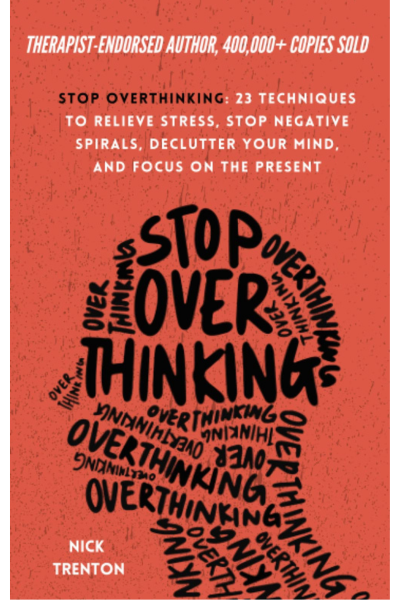

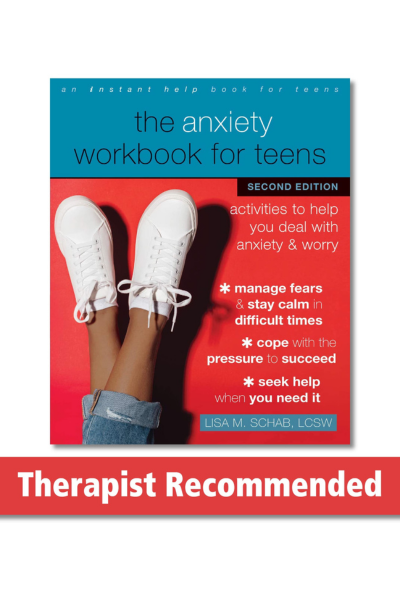
Bonus Video Excercise: How to Calm Down and Feel Better in Two Minutes>>>
Conclusion
Ambivalence is a complex emotional state that arises from the intricate nature of human thoughts, emotions, and experiences. It can't be attributed solely to brain chemistry or hormonal imbalances, as it's influenced by a wide array of psychological, cognitive, and environmental factors.
Understanding ambivalence requires a deep dive into one's own feelings, seeking support, and employing strategies that facilitate clarity and self-awareness. Ultimately, ambivalence is a reminder of the richness and complexity of human emotions and the challenges they present as we navigate life's decisions and relationships.
Relevant Reads>>>



